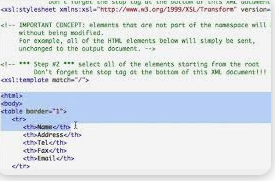The forex market, also known as the foreign exchange market, is a global decentralized marketplace for trading currencies. It is the largest and most liquid financial market in the world, with an average daily trading volume exceeding $6 trillion. Understanding how the forex market works is essential for traders and investors looking to navigate this dynamic environment. This guide will delve into the mechanisms of the forex market, explaining key concepts such as currency pairs, base and quote currencies, and the overall trading process.
What is the Forex Market?
The forex market is a decentralized global marketplace where currencies are traded. Unlike other financial markets, there is no centralized exchange; instead, trading is conducted electronically over-the-counter (OTC), meaning all transactions occur via computer networks between traders around the world. This setup allows the forex market to operate 24 hours a day, five days a week, across major financial centers in different time zones, including London, New York, Tokyo, and Sydney.
Currencies in the forex market are traded in pairs, with each pair consisting of a base currency and a quote currency. The value of a currency pair fluctuates based on economic factors, geopolitical events, and market sentiment. For example, if you believe the euro will strengthen against the US dollar, you would buy the EUR/USD pair. Conversely, if you think the euro will weaken, you would sell the pair.
By understanding the fundamental workings of the forex market, traders can better anticipate price movements, manage risks, and execute trades more effectively. The forex market’s structure and the continuous flow of information require traders to stay informed and adapt to changing market conditions.
How Do Currency Pairs Work in Forex Trading?
In forex trading, currencies are always quoted in pairs because you are simultaneously buying one currency and selling another. This relationship is crucial for understanding the value of a currency relative to another. A currency pair consists of a base currency and a quote currency. The base currency is the first currency listed in the pair, while the quote currency is the second. For example, in the EUR/USD pair, the euro (EUR) is the base currency and the US dollar (USD) is the quote currency.
The exchange rate for a currency pair indicates how much of the quote currency is needed to purchase one unit of the base currency. For instance, if the EUR/USD exchange rate is 1.2000, it means 1 euro can be exchanged for 1.2000 US dollars. The value of currency pairs fluctuates continuously based on economic indicators, geopolitical events, and market sentiment. Traders make profits by predicting these price movements and placing trades accordingly.
What is the Role of the Base and Quote Currencies?
The base currency and quote currency have specific roles in forex trading. The base currency, listed first, represents the currency you are buying or selling. The quote currency, listed second, indicates how much of that currency is needed to buy one unit of the base currency. This structure helps traders understand and execute trades efficiently. For example, in the USD/JPY pair, if the exchange rate is 110.00, it means 1 US dollar (USD) is equal to 110 Japanese yen (JPY).
Understanding these roles is essential for interpreting forex quotes and making informed trading decisions. When a trader buys a currency pair, they are purchasing the base currency and selling an equivalent amount of the quote currency. Conversely, selling a currency pair involves selling the base currency and buying the quote currency. This bid-ask dynamic is fundamental to forex trading and helps in determining profit and loss.
How Does Forex Trading Work?
Forex trading operates through a network of banks, brokers, and financial institutions. Unlike centralized exchanges, forex trading is conducted over-the-counter (OTC), meaning trades occur directly between parties, typically through electronic trading platforms. The forex market is open 24 hours a day, five days a week, allowing continuous trading across different time zones, including major financial centers such as London, New York, Tokyo, and Sydney.
Traders speculate on currency price movements by buying one currency and simultaneously selling another. They use various strategies, including technical analysis, which involves studying price charts and trends, and fundamental analysis, which examines economic indicators and geopolitical events. The aim is to predict currency movements and execute trades to capitalize on these changes. Advanced trading tools and platforms provide real-time data, technical indicators, and news updates to help traders make informed decisions.
What Are the Main Types of Forex Transactions?
Forex transactions can be categorized into several types, each serving different purposes and involving various degrees of risk and complexity. The primary types of forex transactions include spot, forward, futures, options, and swaps.
Spot Forex Market
The spot market is the most straightforward and widely traded type of forex market. It involves the immediate exchange of currencies at the current market price, known as the spot rate. Transactions in the spot market are typically settled within two business days. This market is highly liquid and operates 24 hours a day, five days a week, allowing for continuous trading. The spot market is popular among individual traders and institutional investors for its simplicity and real-time pricing.
Forward Forex Market
In the forward market, two parties agree to trade currencies at a predetermined price on a specified future date. Unlike spot transactions, forward contracts are customized to meet the specific needs of the parties involved, including the amount, delivery date, and other terms. These contracts are primarily used for hedging purposes to protect against potential currency fluctuations. Because they are over-the-counter (OTC) agreements, forward contracts involve counterparty risk, meaning the reliability of the other party must be assessed.
Futures Forex Market
Futures contracts are similar to forward contracts but are standardized and traded on regulated exchanges, such as the Chicago Mercantile Exchange (CME). These contracts specify the quantity, delivery date, and price of the currency to be traded. Futures markets provide greater liquidity and transparency compared to forwards, as prices and trading volumes are publicly available. This market is popular among institutional investors, hedge funds, and speculators looking for a secure and regulated trading environment.
How Does the Forex Market Operate 24 Hours a Day?
The forex market operates 24 hours a day due to its global nature and the different time zones of major financial centers. Trading starts in Sydney, moves to Tokyo, then London, and finally New York, before the cycle repeats. This continuous operation allows traders worldwide to participate at any time of day or night.
Time Zone Influence
The forex market’s 24-hour trading cycle is divided into three main sessions: the Asian session, the European session, and the North American session. The overlap between the European and North American sessions, known as the London-New York overlap, typically experiences the highest trading volumes and liquidity. This period is often the most volatile, presenting numerous trading opportunities.
Advantages of 24-Hour Trading
The round-the-clock nature of the forex market allows traders to react immediately to economic, political, and social events that affect currency prices. It also provides flexibility, enabling traders to develop strategies that fit their schedules and preferences. This constant availability is a significant advantage over other financial markets, which have fixed trading hours.
What Are the Major Forex Trading Centers?
The major forex trading centers are located in key financial hubs around the world, each contributing to the market’s liquidity and volume.
London
London is the largest and most important forex trading center, accounting for a significant portion of global trading volume. The city’s time zone overlaps with both Asian and North American sessions, making it a crucial hub for traders looking to capitalize on market movements.
New York
New York is the second-largest forex trading center, with a substantial volume of transactions occurring during its session. The overlap with the London session makes this period particularly active and volatile, offering numerous trading opportunities.
Tokyo and Sydney
Tokyo is the primary trading center for the Asian market, with the Japanese yen being a major currency traded during this session. Sydney is the starting point of the forex trading day, with the Australian dollar being actively traded. These centers ensure that the forex market remains active around the clock, providing continuous trading opportunities.
Understanding these aspects of the forex market helps traders navigate its complexities and make informed decisions. The different types of transactions, the 24-hour trading cycle, and the major trading centers all play a crucial role in the functioning and efficiency of the forex market.
What is the Role of a Forex Broker?
A forex broker acts as an intermediary between traders and the foreign exchange market. They provide access to a trading platform where traders can buy and sell currencies. Forex brokers offer various services including trade execution, market research, and customer support to facilitate efficient trading experiences.
Trade Execution and Platforms
Forex brokers provide trading platforms that allow traders to execute trades, analyze market data, and manage their accounts. These platforms often come with tools such as charts, technical indicators, and real-time news feeds. Brokers also provide access to liquidity providers, ensuring that traders can execute orders quickly and at favorable prices.
Leverage and Spreads
One of the significant services offered by forex brokers is leverage, which allows traders to control larger positions with a smaller amount of capital. For instance, a leverage ratio of 50:1 means that for every $1 in a trader’s account, they can control $50 in the market. While leverage can amplify profits, it also increases the risk of substantial losses.
How Do Bid and Ask Prices Work in Forex?
The bid and ask prices are crucial components of forex trading, determining the entry and exit points for trades. The bid price is the highest price that a buyer is willing to pay for a currency pair, while the ask price is the lowest price that a seller is willing to accept. The difference between these two prices is known as the spread.
Importance of Bid and Ask Prices
These prices are essential for traders because they affect the cost of entering and exiting trades. When a trader buys a currency pair, they pay the ask price, and when they sell, they receive the bid price. The spread represents the broker’s profit and the cost to the trader. Tighter spreads generally benefit traders as they reduce the cost of trading.
Factors Influencing Spreads
Several factors influence the size of the spread, including market liquidity, volatility, and the currency pair being traded. Major currency pairs like EUR/USD usually have tighter spreads due to higher liquidity, while exotic pairs have wider spreads. Market conditions, such as economic announcements and geopolitical events, can also impact spreads, causing them to widen during periods of high volatility.
What is a Pip and How is it Calculated in Forex Trading?
A pip, short for “percentage in point,” is the smallest price movement in forex trading, representing a change in the fourth decimal place of most currency pairs. For example, if the EUR/USD moves from 1.1050 to 1.1051, it has moved by one pip. For currency pairs involving the Japanese yen, a pip is the second decimal place.
Role of Pips in Trading
Pips are used to measure price movements and calculate potential profits or losses in forex trading. Understanding how pips work is essential for setting stop-loss and take-profit levels, as well as for calculating the spread. For instance, if a trader buys EUR/USD at 1.1050 and sells at 1.1060, they have gained 10 pips.
Pipettes for Precision
Some brokers also use pipettes, which are one-tenth of a pip, for more precise measurement of price movements. This additional decimal place can provide a finer level of detail, particularly useful in strategies that rely on small price changes.
Understanding these concepts is crucial for effective forex trading. They help traders navigate the market, manage risks, and develop strategies to maximize their trading success.
Conclusion
Understanding how the forex market works is essential for anyone looking to engage in currency trading. The forex market, as the largest and most liquid financial market in the world, operates 24 hours a day through a network of banks, brokers, and financial institutions across major financial centers globally. Key concepts such as currency pairs, base and quote currencies, and the role of forex brokers are fundamental to navigating this market effectively.
Forex brokers play a crucial role by providing the necessary platforms and tools for traders to execute trades and access market liquidity. They also offer leverage, which can amplify both profits and losses, making it essential for traders to understand the associated risks. Additionally, understanding the mechanics of bid and ask prices, spreads, and pips helps traders manage their costs and evaluate potential profits or losses accurately.
By mastering these fundamental concepts, traders can develop informed trading strategies, manage risks effectively, and maximize their potential for success in the dynamic and fast-paced forex market. Whether you are a novice trader or an experienced investor, continuous learning and adaptation to market conditions are key to achieving long-term profitability and sustainability in forex trading.
🔍 Unlock the Secrets of the Forex Market! 💹
Are you curious about how the forex market operates? Our comprehensive blog dives deep into the mechanics of forex trading, covering essential topics like currency pairs, the role of forex brokers, bid and ask prices, and the significance of pips. Whether you’re a novice or a seasoned trader, this guide will enhance your understanding and trading strategy. 📈
Discover how to navigate the largest financial market in the world with confidence and skill. Read more now!
#ForexTrading #ForexMarket #TradingStrategies #FinancialMarkets #Investing #CurrencyTrading #ForexEducation
🌐 Master the Forex Market! 🌐
Ever wondered how the forex market works? Our latest blog post is here to guide you through the essentials of forex trading. Learn about currency pairs, the crucial role of forex brokers, and how to effectively use bid and ask prices to your advantage. Whether you’re just starting out or looking to refine your strategies, this comprehensive guide is for you. 📊
Unlock your trading potential and gain the insights you need to succeed in the dynamic world of forex trading. Click the link to read more!
#ForexTrading #CurrencyTrading #Investing #FinancialFreedom #TradingTips #ForexMarket #ForexEducation
📈 Dive into the Forex Market! 📉
Ready to understand how the forex market works? Our latest blog post breaks down everything you need to know, from currency pairs to the role of forex brokers and the importance of pips. Perfect for both beginners and experienced traders, this guide will help you navigate the forex market with confidence. 🚀
Check out the full article through the link in our bio! 🔗
#ForexTrading #ForexMarket #Investing #TradingTips #FinancialEducation #CurrencyTrading #TraderLife #ForexCommunity #LearnToTrade












